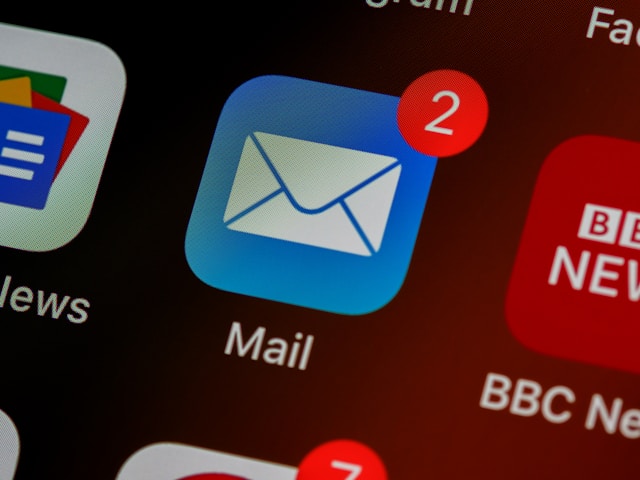The first impression that your users have of your product will make the difference between a loyal or lost user. Concerning customer retention, you can’t overstate the importance of the user onboarding process.
If you can perfect the user onboarding process, you can reap the benefits of an expanded, loyal customer base. You can also look forward to higher retention rates, which will boost your product’s profitability.
Given the importance of user onboarding, in today’s guide, we will analyze user onboarding examples. Additionally, we shall also reveal valuable information regarding the user onboarding process, including the best practices that you should follow.
What Is User Onboarding?
Before we explore the best examples of user onboarding, you must have a clear understanding of what user onboarding actually entails.
The user onboarding process occurs when your users become acquainted with your app, product, or service. What’s more, the user onboarding process doesn’t just involve your users’ initial interactions with your product. The user onboarding process also involves your users becoming proficient in using and navigating through your digital product.
In order to create a positive user onboarding experience, your users should exhibit the following:
- An understanding of your product’s value.
- The knowledge to successfully use your product on their own, without guidance.

User Onboarding vs Product Onboarding
Although closely related, user onboarding and product onboarding serve two different purposes. This distinction is something you must understand in order to create an easy-to-follow user flow.
User onboarding, like UX design, focuses on the specific needs of the user as an individual.
Ultimately, user onboarding focuses on demonstrating how certain users can utilize the product to get the most out of it. You should employ the user onboarding process to demonstrate the value of your product.
On the other hand, the product onboarding process revolves around introducing your product to everyone/all user types. Product onboarding processes reveal valuable information regarding how to use the product and the product’s most compelling or useful features.
Feature-oriented, the goal of product onboarding is to make the product more discoverable during the user’s initial interaction.
Aside from discovery, product onboarding teaches the user how to utilize the product in their first few uses.
Overall, product onboarding helps customers experience the core value of your product. Thus, you should perceive product onboarding as an aid to the user onboarding process rather than a substitute.
7 Types of User Onboarding You Should Know and Utilize
Before you begin designing your own user onboarding experience, you should know about the different types of user onboarding.
By exploring the conventional user onboarding methods, you can identify what works about each technique. From there, you can start to evaluate how each method could fit into your own user onboarding process.
1. Product Tours
Similar to physical tours, product tours serve as a virtual walkthrough, whereby you guide your user through your product. Typically, product tours guide the user through your product’s user interface and basic features using images, videos, and flows.
A product tour showcases your product’s features and which elements the user can interact with. You’ll find that product tours are especially effective when introducing the user to a product that they may find unfamiliar.
2. Interactive Walkthroughs
It’s essential that you don’t adhere to the misconception that an interactive walkthrough is the same as a product tour.
Where product tours focus on demonstrating a digital product’s features, an interactive walkthrough shows how said features work.
Interactive walkthroughs act as interactive in-app guidance that displays tutorials that help users learn more about your product’s features. Interactive walkthroughs prompt user action, making them a more active means of teaching the user. Consequently, it’s more likely that the user will retain important information.
3. Smart Tips
Smart tips (or tooltips) are incredibly useful when you make a point about a specific element of your digital product.
Smart tips appear as concise messages, popping up when the user moves and hovers their cursor over a design element. For instance, smart tips can appear when the user hovers over an icon, image, or another element of UI design.
Smart tips draw the user’s focus to said specific design element and provide contextual information that users may find helpful.
4. Alerts
Alerts appear when the user executes an action within the digital product.
Conventionally, UI designers use modal windows to convey alerts, removing the user’s ability to progress until they’ve interacted with it.
For instance, if a user tried to delete something, an alert would appear, asking them to confirm their decision.

5. Guided Task Lists
Guided task lists serve as a type of to-do list that users must follow and complete. Guided task lists break down your product’s main features in a digestible way, teaching users how certain product features work.
Onboarding checklists enable users the autonomy to complete the onboarding process as they wish, which fosters positive user onboarding experiences.
If you combine a well-designed, simple, informative onboarding checklist with a progress bar, you’ll create an effective user onboarding process.

6. Hotspots
You can use hotspots as a less intrusive, textless alternative option to smart tips.
Hotspots are bright dots/beacons that show users specific UI elements without distracting them from other design elements.
Usually, you would use a hotspot to emphasize an unused feature or alert visually.
7. Announcement Bars
Announcement bars are valuable tools that exhibit a vital contrast that should exist within your user onboarding flow. On the one hand, announce bars increase the viewability of notifications in a visually compelling way. On the other hand, they are also non-invasive in nature.
Compelling and non-invasive, you should use announcement bars to highlight information that users may have an interest in.
How to Design an Effective User Onboarding Flow
It’s time to put what you’ve learned into practice!
A user onboarding flow is a means of introducing your product’s user interface to both current and new users. In other words, your user onboarding flow will determine the success of your user onboarding process overall.
With this in mind, we shall now reveal how to design and conduct an effective user onboarding flow!
1. Understanding Your Users’ Needs and Desires
The intended purpose of your digital product and how users use your digital product won’t always align. For instance, Slack’s purpose was to host professional, work-related conversations. However, Slack also allows for private conversations between an employee and an individual outside of their organization.
For this reason, you must customize your user onboarding process to your users’ desires and needs. Like how UX researchers conduct user research, you must take the time to know your users as individuals. Try to anticipate how your users will utilize your products, even if it wasn’t how you originally intended.
By getting to know the factors that affect your users’ interactions (psychological, environmental, etc.), you can refine the onboarding process.
2. Welcoming the User
When it comes to introducing the user to your product, it’s important to keep your introduction short and sweet.
Remember, an effective introduction is easy to follow, informative, helpful, enjoyable, and gives the user confidence to use the product.
Your primary goal, at this stage, is not to overwhelm the user with too much information. Here’s what you should include in the user’s initial interaction with your product.
- You should include a positive, welcoming message or greeting. This will help you convey the tone of the onboarding experience.
- You should include a summary of the product, its features, and its most compelling elements. You may also briefly describe how the user can perform tasks.
- You should include a short walkthrough of the product’s homepage.

3. Using Visuals To Drive Engagement
You should incorporate visual design elements into your user onboarding process. Not just for the sake of visual intrigue, you can use visual elements to break up large amounts of copy.
Images can provide an alternative manner of explaining essential information about the product. Using images can result in the user finding it easier to absorb said information.
Videos combine practicality with immersion and can demonstrate the full extent of the product’s capabilities in an engaging manner. Experiment with different alternative means of conveying information. You’ll find that accommodating the different ways in which people learn will make the user’s onboarding experience more accessible.

4. Designing for Interactivity
The users’ active participation in the onboarding process will increase the likelihood that they remember how to use the product. For this reason, interactivity will enhance your onboarding process.
For instance, quizzes, games, and challenges will elevate the user’s enjoyment while testing their knowledge of your product.
5. Evaluating the Quality of Your User Onboarding Process
You must analyze the performance of your onboarding process, garnering qualitative and quantitative data that you can implement.
You must identify the metrics you wish to track, such as the completion rate of certain tasks. Then, you must collect data that focuses on your chosen metrics. From here, you can analyze your findings and identify potential improvement areas. Lastly, it’s time to create solutions that stem from your data analysis, refining the overall onboarding experience.
6. Providing Valuable Resources
The goal of the user onboarding process is to make the user knowledgeable and confident enough to use your products.
When learning how to utilize and navigate through your product, your users may require additional support.
By providing FAQs, support forums, and virtual assistants, you’ll help the user resolve any issues they encounter. Utilize social proof to show how other similar users have successfully completed the user onboarding process.
7. Receiving and Integrating Feedback
Garnering feedback from users will reveal the strengths of your product. Additionally, user feedback will illuminate your product’s weaknesses, narrowing the product’s areas of refinement.
Here are a few ways you can receive feedback.
- Distribute surveys that focus on the quality of the user’s onboarding experience. Utilize open-ended questions to determine the user’s reasoning behind their answers.
- Integrate in-app feedback tools that can generate real-time insights from users.
User Onboarding Best Practices
Now that you know how to design an effective user onboarding flow, it’s crucial that you adhere to effective practices.
By following the best practices for user onboarding that we’ve provided, you’ll increase the likelihood of attaining new, loyal users.
Let’s explore how you can refine your own user onboarding process!
- Focus on one onboarding goal at a time.
- Provide human-driven support if needed.
- Ask the right research questions in order to personalize the user onboarding experience effectively.
- Let your product and the user’s intuition do most of the onboarding.
- You don’t have long to make a lasting impression, so you should avoid lengthy product tours.
- You should provide brief, actionable tips or nudges to help your user navigate through your product. Additionally, you should provide an option where the user can disable said tips/nudges to avoid any unnecessary frustrations.
- You should avoid premature action nudges where the benefit to the user isn’t immediately clear.
- Speed is a vital component of an effective user onboarding experience. You should aim to reduce the amount of clicks required for the user to complete the user onboarding process. By doing so, you’ll allow your users to proficiently utilize and enjoy your product quickly, increasing its perceived value.
- Sometimes, there is no avoiding a long user onboarding process. You should use visual elements to break up large amounts of copy.
- Provide plenty of helpful resources.
The Best User Onboarding Examples
Let’s look at the best user onboarding examples so that you can see an effective user onboarding process in action.
Slack
Slack’s user onboarding process serves as a perfect example of effective iteration. Cutting down on lengthy introductions, Slack’s most effective qualities within its onboarding process are personality and resourcefulness.
- Personality: After a simple sign-up form, Slack offers a whimsical welcoming message.
- Resourcefulness: Slack provides a virtual assistant in the form of Slackbot. Slackbot provides useful information while prompting the user to take certain actions, driving interactivity.
Grammarly
Grammarly exhibits an effective use of incremental onboarding. Grammarly gradually introduces the user to useful UI patterns, showing their determination to avoid overwhelming the user.
What’s more, by utilizing incremental onboarding, they cater to all user types, including users who struggle with cognitive overload.
Grammarly also employs hotspots that strike the perfect balance between subtly and visual intrigue. This demonstrates how Grammarly’s design team fosters the user’s independence while still providing support if necessary.
The Best App Onboarding Examples
Now, we’ll explore the best app onboarding examples!
Tumblr
Tumblr stands as a testament to the importance of personalization within the user onboarding process.
Specifically, you can see elements of personalization after the user has signed up. Immediately after signing up, the user will select a series of interests. By doing this, the user is actively tailoring the onboarding process to their own needs and desires.
By giving the user immediate autonomy over their account, Tumblr’s design team offers the user a sense of belonging.
Duolingo
Duolingo’s app takes an unconventional approach to user onboarding and places its signup form last.
By postponing registration, Duolingo allows the user to familiarize themselves with the product before committing to signing up.
Not only that, but Duolingo utilizes progress bars to motivate the user to complete the onboarding process.
A User Onboarding Image
To help you see how you can create a visually compelling and informative onboarding process further, you’ll need more inspiration.
In this section, we’ll focus on the visual side of the onboarding process. Specifically, you should research and evaluate user onboarding images.
Check out Dribbble to see how you can smoothen the user’s navigation through your product!
User Onboarding Examples: Learning How To Convey Your Product’s Value
Hopefully, the primary message that you’ve taken away from this article is that user-centricity dominates the digital marketing landscape.
Furthermore, every interaction and user experience you design should put the user first, especially during the onboarding process. Without an effective user onboarding experience, your users would abandon your product before evaluating its value.
So, with that in mind, you should familiarize yourself with your users. By doing so, you’ll create a user onboarding experience that is not only informative but also compelling.
Why not take inspiration from consistently successful and engaging digital products? Meet Page Flows.
Boasting an ever-evolving library of over 4,500 tried and tested products, Page Flows has mastered the user onboarding process. We have worked with over 1,000 happy customers from esteemed brands, all of whom can attest to our user-centricity.
Our extensive, impressive skill sets and competencies go beyond providing our clients with valuable user onboarding inspiration. We recognize the importance of seamless user flows; thus, we offer inspiration regarding user upgrading and invitation user flows.
When it comes to finding user onboarding examples, you needn’t look any further for inspiration.
Get started today to access our growing library of user flow recordings and finally stay up-to-date with current design trends.





